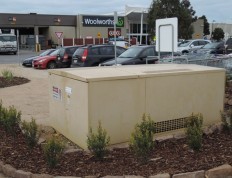Solar reflective coatings aiding OH&S is a novel concept for many property managers.
Yet, ThermaGuard HRC can solve serious problems easily and cheaply.
Some of our most satisfying projects involved ensuring people’s safety. No more so than within processing plants, which are often hot and hazardous.
Typically building managers calling on us to help with safety related challenges, have already investigated traditional solutions. Long lead times, high expense or unacceptable disruption to their core operations are common concerns.
So let us give you examples of where ThermaGuard HRC’s heat reduction ably assists in maintaining OH&S compliance:
- Safety and function in mining operations
- Staff suffering excessive heat conditions in warehousing
- Insulating within gas plants
- Chemical storage
- Water treatment facilities (like the example we’ll cover in this article)
- And battery storage rooms
Solving OH&S Issues at a Shire-Council Water Treatment Facility:
Our Managing Director, Ron Canale was called on to advise at a water treatment station. The plant operators were suffering excessive heat and high humidity. To the point of being intolerable.
If being hot and sticky was not bad enough, there was another factor with potential health consequence to the staff. The combined temperature and humidity increased vapour concentrations of water treatment chemicals – including chlorine.
The chemical vapour concentration was sufficient to affect breathing comfort.
Ron Canale said that the operators were working on gantries above water tanks and were directly exposed to chemical laden vapours.
Our Process: Ron’s team first power washed the roof and then applied a standard white reflective coating. Our clients reported their building was immediately a better working environment for their staff.
The entire project was finished in only two days – without any disruption to the treatment station.
How it Worked: Reducing temperature reduced humidity (and the air became breathable)
Previously internal temperatures had exceeded 40 degrees during summer. Once coated, the new maximum temperature was 28 degrees.
Reduced humidity aided workers by making air more breathable and creating a safer environment for handling chemicals.
Five OH&S benefits applied in this installation
- Reduced temperature extremes
- Reduced humidity
- Reduced danger around high VOC chemcials
- Prevented chemical spoilage
- Helping to eliminate distraction due to discomfort


